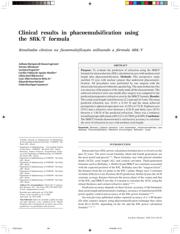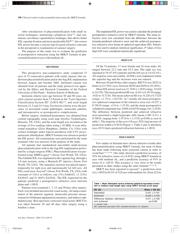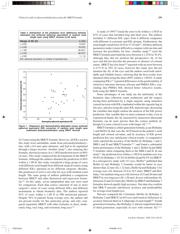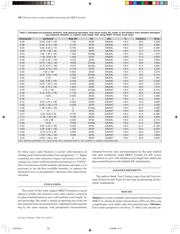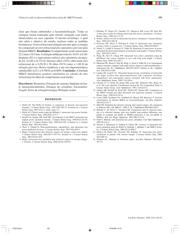Datasheet 搜索 > 电源配件 > ST Microelectronics(意法半导体) > SRK2000D 数据手册 > SRK2000D 其他数据使用手册 1/5 页
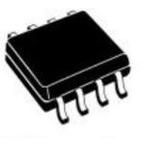
 器件3D模型
器件3D模型¥ 12.408
SRK2000D 其他数据使用手册 - ST Microelectronics(意法半导体)
制造商:
ST Microelectronics(意法半导体)
分类:
电源配件
封装:
SOIC-8
Pictures:
3D模型
符号图
焊盘图
引脚图
产品图
SRK2000D数据手册
Page:
of 5 Go
若手册格式错乱,请下载阅览PDF原文件

Arq Bras Oftalmol. 2009;72(2):189-93
Resultados clínicos na facoemulsificação utilizando a fórmula SRK/T
Trabalho realizado no Departamento de Oftalmologia
da Universidade Federal de São Paulo - UNIFESP - São
Paulo (SP) - Brazil.
1
Department of Ophthalmology - Universidade Federal
de São Paulo - UNIFESP - São Paulo (SP) - Brazil.
2
Substitute Adjunct Professor, Posgraduation Profes-
sor at the Department of Ophthalmology of UNIFESP -
São Paulo (SP) - Brazil.
3
Department of Ophthalmology of UNIFESP - São Paulo
(SP) - Brazil.
4
Department of Ophthalmology of UNIFESP - São Paulo
(SP) - Brazil.
5
Department of Ophthalmology of UNIFESP - São Paulo
(SP) - Brazil.
6
Department of Ophthalmology of UNIFESP - São Paulo
(SP) - Brazil.
7
Department of Ophthalmology of UNIFESP - São Paulo
(SP) - Brazil.
8
Department of Ophthalmology of UNIFESP - São Paulo
(SP) - Brazil.
Address for correspondence: Juliana M. S. Lagrasta.
Rua Botucatu, 822 - São Paulo (SP) CEP 04023-062
E-mail: julagrasta@uol.com.br
Recebido para publicação em 23.04.2008
Última versão recebida em 16.12.2008
Aprovação em 28.01.2009
Nota Editorial: Depois de concluída a análise do artigo
sob sigilo editorial e com a anuência do Dr. Wagner
Zacharias sobre a divulgação de seu nome como revisor,
agradecemos sua participação neste processo.
Juliana Marques de Souza Lagrasta
1
Norma Allemann
2
Luciana Scapucin
3
Cecilia Tobias de Aguiar Moeller
4
Lilian Emi Ohkawara
5
Luiz Alberto Soares Melo Jr.
6
Eduardo Sone Soriano
7
Fabio Henrique Casanova
8
Clinical results in phacoemulsification using
the SRK/T formula
Keywords: Biometry; Cataract extraction; Lens implantation, Intraocular/methods; Lens
diseases; Phacoemulsification; Refractive errors/surgery; Refraction, ocular
Purpose: To evaluate the prediction of refraction using the SRK/T
formula for intraocular lens (IOL) calculation in eyes with medium axial
length after phacoemulsification. Methods: This prospective study
enrolled 33 eyes with nuclear cataract that underwent phacoemulsi-
fication. All procedures were performed by one surgeon with the
intraocular lens placed within the capsular bag. The same technician who
was unaware of the purpose of the study made all the measurements. The
achieved refractive error one month after surgery was compared to the
predicted postoperative refractive error by the SRK/T formula. Results:
The ocular axial length varied between 22.2 mm and 24.5 mm. The mean
predicted refraction was -0.431 ± 0.181 D and the mean achieved
postoperative spherical equivalent was -0.220 ± 0.732 D. Eighteen eyes
(55%) had a refractive error between ± 0.50 D and thirty eyes (91%)
between ± 1.00 D of the predicted refraction. There was a tendency
toward hyperopic shift (mean ± SD: 0.211 ± 0.708 D, p=0.009). Conclusion:
The SRK/T formula demonstrated a satisfactory accuracy to calculate
the error of refraction in eyes with medium axial length.
ABSTRACT
INTRODUCTION
Intraocular lens (IOL) power calculation formulas have evolved over the
past 25 years. The most recent formulas (third and fourth generation) are
the most useful and precise
(1-6)
. These formulas vary with anterior chamber
depth (ACD), axial length (AL) and corneal curvature. Third-generation
formulas such as Holladay 1, Hoffer Q and SRK/T use constants associated
with the expected position of the IOL. Holladay uses the “surgeon factor”,
the distance from the iris plane to the IOL’s plane; Haigis uses 3 constants
for better Effective Lens Position (ELP) prediction; Hoffer Q uses the ACD
constant, average distance between the power plane of the cornea and that
of the IOL; and SRK/T uses the A-constant to calculate the ACD, using the
retinal thickness and corneal refractive index
(1,3,5,7)
.
Prediction accuracy depends on three factors: accuracy of the biometric
data (axial length and keratometry readings), accuracy of manufactured IOL
power quality control and accuracy of the IOL power formulas
(1,8-9)
.
Several previous published studies reported accuracy of ± 1.00 diopter
(D) after cataract surgery using phacoemulsification technique that varies
from 80 to 94.8%, depending on the AL and the IOL power calculation
formula
(1-4,10-11)
.
72(2)10.pmd 15/4/2009, 10:10189
器件 Datasheet 文档搜索
AiEMA 数据库涵盖高达 72,405,303 个元件的数据手册,每天更新 5,000 多个 PDF 文件
